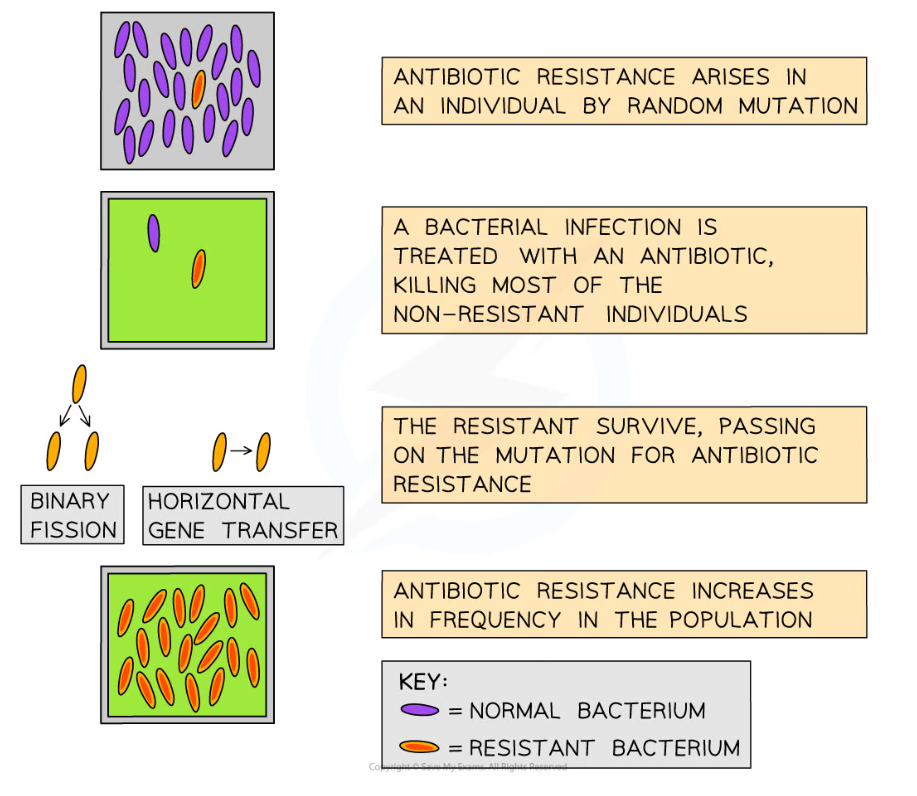- 翰林提供学术活动、国际课程、科研项目一站式留学背景提升服务!
- 400 888 0080
Edexcel A (SNAB) A Level Biology:复习笔记6.2.11 Limiting Antibiotic Resistance
Limiting Antibiotic Resistance
Hospital acquired infections
- Infections that are contracted by a patient while in hospital are known as hospital acquired infections (HAIs)
- The transmission of HAIs is increased by poor hygiene practices which might include
- Staff and visitors not washing hands regularly
- Uncontained coughing and sneezing
- Failing to disinfect equipment and surfaces after use
- Patients in hospital are likely to already be ill and to have weakened immune systems, putting them at high risk of contracting infectious disease
- Hospitals have measures in place that aim to reduce the spread of HAIs
- Staff and visitors must wash hands regularly while visiting patients
- If a person contracts a HAI they should be moved to an isolation ward to prevent spread of the infection
- Surfaces and equipment must be disinfected after every use
HAIs and antibiotic resistance
- Some HAIs are caused by antibiotic resistant bacteria
- A well known example of an antibiotic resistant HAI is methicillin-resistant Staphylococcus aureus, also known as MRSA; in this case the bacterial strain of S. aureus has developed resistance to the antibiotic methicillin
- Antibiotic resistant infections are difficult to treat as they do not respond to regular antibiotics
- These HAIs can cause serious health complications or death
- The risk of antibiotic resistant bacterial strains arising is high in hospital environments
- Antibiotics are widely used in hospitals to treat disease which provides a selection pressure for resistant strains of bacteria to develop
- Selection pressures are factors in the environment that drive natural selection
- In ecology the presence of a predator would be an example of a selection pressure
- Selection pressures are factors in the environment that drive natural selection
- Antibiotics are widely used in hospitals to treat disease which provides a selection pressure for resistant strains of bacteria to develop
- Certain hospital practices have been developed to reduce the risk of antibiotic resistant HAIs
- No antibiotic prescriptions for minor infections or viral diseases
- No use of antibiotics as a preventative measure against infections
- Prescription of a narrow-spectrum antibiotic to treat the infection
- Narrow-spectrum antibiotics are active against a narrow range of bacterial infections, as opposed to broad-spectrum antibiotics which are effective against many types of bacteria
- The advantage of using narrow-spectrum antibiotics is that any resistance genes that arise will not cause problems if they are transferred to other types of bacteria, as those other types of bacteria will be treated with a different antibiotic
- Bacteria are able to exchange genes with each other by a process of horizontal gene transfer
- Rotate the use of different antibiotics to decrease the chance of bacteria developing resistance against one antibiotic

Antibiotic resistance in bacteria arises by natural selection; it is therefore more likely to occur in environments where antibiotics are frequently used, such as hospitals
转载自savemyexams

早鸟钜惠!翰林2025暑期班课上线

最新发布
© 2025. All Rights Reserved. 沪ICP备2023009024号-1








